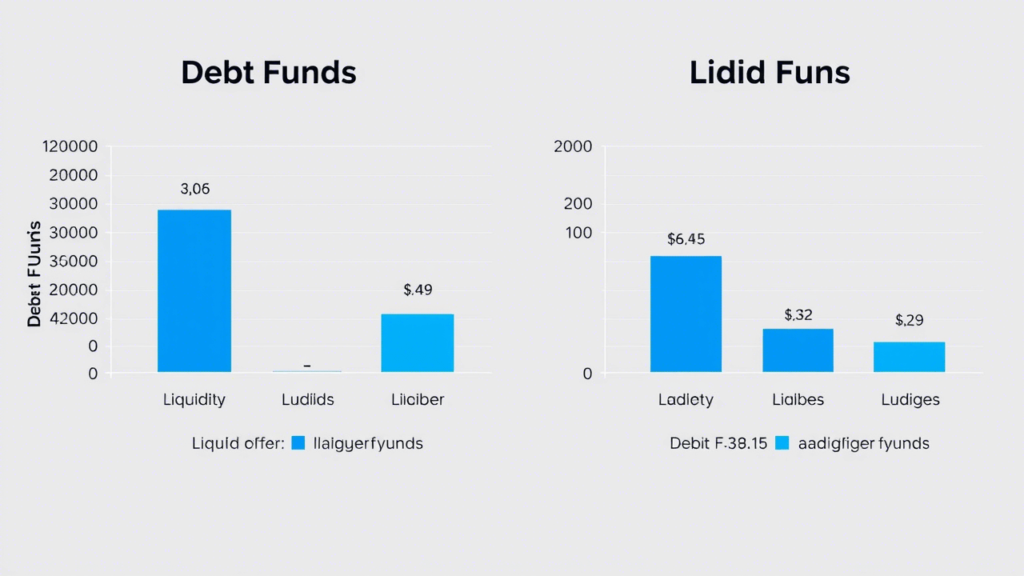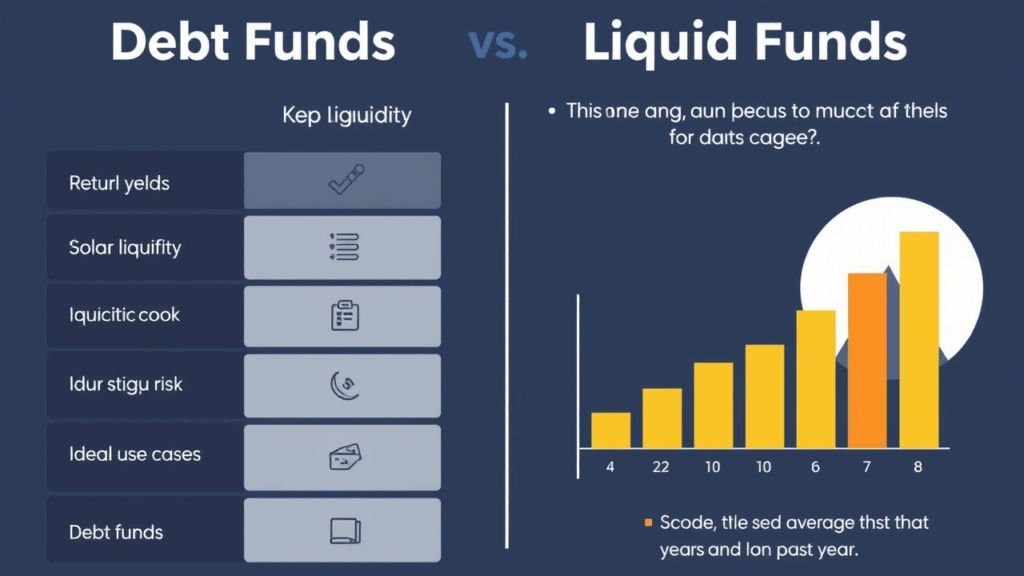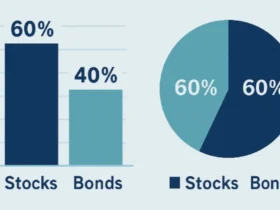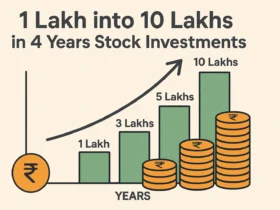Life has a funny way of throwing curveballs when you least expect it—a sudden medical bill, a car breakdown, or even a job loss can turn your world upside down in an instant. That’s where an emergency fund comes in: your financial superhero, swooping in to save the day without the burden of debt or stress. But here’s the million-dollar question—where should you park this all-important safety net? Two popular contenders in the mutual fund world are debt funds and liquid funds. Both promise safety and returns, but which one is truly the best fit for your emergency stash?
What’s an Emergency Fund, Anyway?
Before we pit debt funds against liquid funds, let’s set the stage. An emergency fund is your go-to cash reserve for life’s unpredictable moments. Think of it as a financial buffer—money you can tap into without selling your stocks, dipping into retirement savings, or swiping that high-interest credit card.
Why You Need One
- Peace of Mind: Sleep better knowing you’ve got a cushion for the tough times.
- Debt Avoidance: Skip the loans and credit card traps that pile on stress.
- Flexibility: Handle emergencies without derailing your long-term goals.
- Security: Cover essentials like rent, groceries, or repairs when income takes a hit.
Experts suggest stashing away 3-6 months’ worth of living expenses—more if you’re self-employed or have dependents. But keeping this money under your mattress or in a low-yield savings account? That’s not the smartest move. Enter debt funds and liquid funds—two options that promise better returns with varying degrees of accessibility.

Understanding Debt Funds: The Steady Players
Debt funds are mutual funds that invest in fixed-income securities—think government bonds, corporate bonds, treasury bills, and other debt instruments. Their goal? To deliver steady returns with lower risk than equity funds. They’re like the reliable friend who’s always there, offering a predictable income stream through interest and some capital appreciation.
Types of Debt Funds
- Short-Term Debt Funds: Securities maturing in 1-3 years.
- Medium-Term Debt Funds: Maturities of 3-5 years.
- Long-Term Debt Funds: Beyond 5 years.
- Specialized Funds: Gilt funds (government securities), credit risk funds (lower-rated bonds), or dynamic bond funds (flexible durations).
Debt funds come with varying risk levels depending on the securities they hold and their maturity periods. Longer durations mean more exposure to interest rate changes, while shorter ones are safer but offer modest returns.
Meet Liquid Funds: The Quick-Access Champions
Liquid funds are a subset of debt funds, but they’re built for speed and safety. They invest in ultra-short-term instruments with maturities of up to 91 days—things like treasury bills, commercial papers, and certificates of deposit. Their mission? High liquidity, capital preservation, and stable (though modest) returns.
What Sets Liquid Funds Apart
- Super Short-Term: Investments mature in less than 3 months.
- High Liquidity: Redeem your money in as little as one business day.
- Low Risk: Minimal exposure to interest rate swings or defaults.
Think of liquid funds as the cash equivalent of the investment world—safe, accessible, and just a step above your savings account in terms of returns.
Debt Funds vs. Liquid Funds: The Key Differences
Both debt funds and liquid funds fall under the debt mutual fund umbrella, but they cater to different needs. Here’s a quick rundown:
- Investment Horizon
- Liquid Funds: Short-term (under 1 year).
- Debt Funds: Short to long-term, depending on the fund.
- Liquidity
- Liquid Funds: Fast cash—usually T+1 day (one business day).
- Debt Funds: Slower, with potential exit loads or delays (T+1 to T+3).
- Risk
- Liquid Funds: Low, thanks to short maturities and high-quality assets.
- Debt Funds: Low to moderate, depending on duration and credit quality.
- Returns
- Liquid Funds: Around 4-6% p.a., stable and predictable.
- Debt Funds: 6-8% p.a., but with more variability.
- Purpose
- Liquid Funds: Emergency cash or short-term parking.
- Debt Funds: Medium to long-term wealth building.
For emergencies, we need liquidity, safety, and ease of access. Let’s see how these two stack up.
Comparing Debt Funds and Liquid Funds for Emergencies
When the unexpected hits, your emergency fund needs to shine. Here’s how debt funds and liquid funds measure up against the must-haves: liquidity, safety, and returns.
1. Liquidity: How Fast Can You Get Your Money?
Emergencies don’t wait, and neither should your money. Liquid funds are the champs here—most let you redeem your investment within one business day, with funds hitting your bank account pronto. Some even offer instant redemption up to a limit (say, Rs. 50,000 or 90% of your investment, whichever is lower), making them as close to cash as you can get.
Debt funds, though? It’s a mixed bag. Short-term debt funds might process redemptions in a day or two, but many come with exit loads—penalties for withdrawing early (e.g., 0.5-1% if redeemed within 6 months to a year). Longer-duration funds could take T+3 days or more, leaving you scrambling when time’s of the essence.
Winner: Liquid funds, hands down.
2. Safety: Will Your Money Be There When You Need It?
An emergency fund isn’t the place to gamble. Liquid funds keep it safe by sticking to high-quality, short-term securities (think AAA-rated papers or government-backed instruments). Their ultra-short maturities (up to 91 days) mean they’re barely affected by interest rate hikes or market volatility, keeping your capital intact.
Debt funds are trickier. Longer-duration funds face interest rate risk—if rates rise, their net asset value (NAV) can dip, eating into your principal. Credit risk funds, which chase higher yields with lower-rated bonds, add another layer of uncertainty. For emergencies, any chance of loss is a dealbreaker.
Winner: Liquid funds again—safety first!
3. Returns: What’s the Payoff?
Returns matter, but not at the cost of accessibility or security. Liquid funds offer 4-6% per annum, beating the 3-4% you’d get from a savings account while keeping risk low. It’s not a fortune, but it’s enough to outpace inflation slightly.
Debt funds can deliver 6-8% or more, especially with longer durations or riskier bets. Tempting, right? But that extra return comes with volatility and potential exit costs—hardly worth it when you’re racing to pay an urgent bill.
Winner: Liquid funds for emergencies; debt funds for other goals.
4. Taxation: What’s the Tax Hit?

In India, both follow the same tax rules:
- Short-Term Capital Gains (STCG): If held less than 3 years, taxed at your income slab rate.
- Long-Term Capital Gains (LTCG): If held over 3 years, 20% with indexation.
Since emergencies strike without warning, you’re unlikely to hold either for 3+ years, so STCG applies. The tax impact is similar, but liquid funds’ shorter horizon aligns better with emergency needs.
Winner: Tie—taxation doesn’t tip the scales.
5. Ease of Access: How Simple Is It?
Some liquid funds sweeten the deal with perks like ATM cards or mobile app redemptions, letting you withdraw cash instantly. Debt funds rarely offer such bells and whistles, sticking to standard redemption processes that might involve paperwork or delays.
Winner: Liquid funds for convenience.
A Real-Life Scenario: Sarah’s Emergency Test
Let’s bring this to life with Sarah, a 32-year-old marketing manager. She’s saved Rs. 3 lakhs for emergencies and is torn between a debt fund and a liquid fund.
One day, her father falls ill, needing Rs. 1.5 lakhs for surgery within a week. If Sarah’s money is in a liquid fund, she logs into her fund’s app, requests a redemption, and gets the cash in her account the next day—no penalties, no fuss. Her fund’s NAV stays stable, and she covers the bill stress-free.
But what if she’d picked a long-term debt fund? With a 1-year exit load of 1%, she’d lose Rs. 1,500 on the withdrawal. Worse, a recent interest rate hike drops the NAV by 2%, shaving off another Rs. 3,000. She ends up with less than she needs, scrambling to bridge the gap.
Now, imagine she’d kept it in a savings account. Instant access, sure, but at 3.5% interest, her Rs. 3 lakhs earned just Rs. 10,500 annually—far less than the Rs. 15,000-18,000 from a liquid fund. For Sarah, the liquid fund wins.
Expert Voices: What the Pros Say
Financial gurus weigh in on this debate:
“An emergency fund should be liquid and low-risk. Liquid funds are perfect—they offer decent returns without tying up your money or exposing it to market swings.”
— Priya Sharma, Certified Financial Planner“Debt funds are great for wealth creation over time, but for emergencies? Stick to liquid funds. You can’t afford delays or losses when the stakes are high.”
— Rahul Jain, Investment Advisor
The consensus? Liquid funds are the emergency fund MVP.
Comparison Table: Debt Funds vs. Liquid Funds
Here’s a side-by-side look:
| Feature | Liquid Funds | Debt Funds |
|---|---|---|
| Liquidity | High (T+1 day) | Varies (T+1 to T+3, exit loads) |
| Risk | Low | Low to Moderate |
| Returns | 4-6% p.a. (indicative) | 6-8% p.a. (indicative) |
| Investment Horizon | Short-term (<1 year) | Short to Long-term |
| Exit Load | Usually none | Often applies if early withdrawal |
| Suitability | High for emergencies | Moderate—better for other goals |
Note: Returns are approximate and depend on market conditions.
Alternatives to Consider
Liquid funds shine, but here are other options:
- High-Yield Savings Accounts: 3-4% interest, instant access, but lower returns.
- Money Market Funds: Up to 1-year maturities, slightly higher risk than liquid funds.
- Short-Term FDs: Fixed returns, but early withdrawal penalties apply.
For most, liquid funds hit the sweet spot.
How to Pick the Best Liquid Fund
Not all liquid funds are equal. Here’s your checklist:
- Credit Quality: Stick to AAA-rated or government securities.
- Expense Ratio: Lower is better—more returns for you.
- Fund Size: Bigger funds often mean better liquidity.
- Track Record: Consistent past performance signals reliability.
- Perks: Look for instant redemption or app-based access.
Research top funds online or chat with an advisor to find your match.
Building Your Emergency Fund: A Step-by-Step Guide
Ready to start? Here’s how:
- Calculate Your Needs: Tally monthly expenses (rent, food, bills) and multiply by 3-6.
- Set a Goal: Save Rs. 5,000-10,000 monthly, whatever fits your budget.
- Pick a Liquid Fund: Choose one based on the tips above.
- Automate It: Set up SIPs or transfers to stay disciplined.
- Review Regularly: Adjust as expenses or income change.
Common Mistakes to Dodge
- Skipping It: No fund? You’re one emergency away from trouble.
- Risky Bets: Stocks or long-term debt funds aren’t for emergencies.
- Misusing It: That new phone isn’t an emergency—save separately.
- Ignoring Inflation: Ensure returns at least match rising costs.

FAQs: Your Burning Questions Answered
- How much should I save for emergencies?
Aim for 3-6 months’ expenses—more if your income’s unstable. - Can I use a credit card instead?
It’s a quick fix, but high interest (18-36%) beats an emergency fund’s zero debt. - Are liquid funds risk-free?
Not quite—there’s a tiny chance of default, but it’s rare with quality funds. - How do I cash out a liquid fund?
Online, via app, or through your advisor—funds arrive in a day. - Why not equity funds?
They’re volatile—your Rs. 1 lakh could shrink to Rs. 80,000 when you need it most.
The Verdict: Liquid Funds Take the Crown
After dissecting liquidity, safety, returns, and more, liquid funds emerge as the ultimate emergency fund vehicle. They’re fast, safe, and offer a decent return—everything you need when life throws a punch. Debt funds have their place—think medium-term goals or portfolio diversification—but for emergencies, they’re too slow and risky.
So, what’s your next step? If your emergency fund’s languishing in a savings account or tied up elsewhere, it’s time to make the switch. Open a liquid fund account, start small if you must, and build that safety net. Because when the unexpected knocks, you’ll be ready—not just to survive, but to thrive.






























Leave a Reply